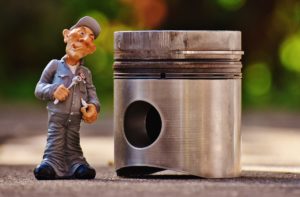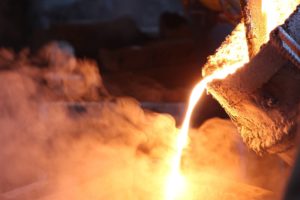Most manufacturing companies have no idea of the actual costs associated with non-quality within their production processes. Having the necessary information to both understand these costs and, more importantly, have alerts that allow for the correction of any quality issues as soon as possible can lead to significant savings.
Let’s consider a real example of the costs associated with non-quality in a process and not controlling the quality information of that process.
Suppose a factory produces aluminum pistons for combustion engines. A basic process might be as follows:
- Aluminum Casting
- Sand Mold Generation
- Pouring Aluminum into the Mold
- Cooling the Piece
- Machining the Piece
- Polishing
- Quality Review
- Packaging

Each of these processes has associated costs, including:
- Raw materials used
- Direct labor
- Proportional administrative costs (Accounting, Human Resources, IT, etc.)
- Amortization of the machinery or tools used
- Energy and other basic supplies (electricity, gas, water, etc.)
- Cost of the space used (Rent or amortization of owned premises)
- Proportional maintenance costs for the machinery
- Etc.
These costs accumulate with each step of the production process, increasing the overall production costs throughout the entire operation.
Now, let’s imagine that the company has a quality system where errors are recorded on a paper document, which is collected every night and uploaded to a system manually to identify potential quality issues and deviations that may exist. (Most companies don’t even have this system established). In this example, let’s assume that during the machining process, the machine has a problem that generates a 5% error rate, rendering the pieces unacceptable for sale, and this defect is detected during the quality review after machining. If 1,000 pieces are produced daily on that machine across three shifts, that translates to 50 defective pieces. If the usual error rate is 1%, we’re talking about 40 defective pieces per day.

In this specific case, some clients have even mentioned that since the piece is made of aluminum, it can be remelted, thus incurring no cost. Let’s assume that there is no cost associated with the raw material because it can be recycled (although there are always material losses in manufacturing processes). Nevertheless, we still have the costs associated with the personnel who worked on the previous processes, the energy and supplies, additional raw materials used in production, such as sand for the molds, the amortization of machinery and space, and administrative costs, among others. All these costs must be multiplied by 40 in this case, or even more, since information about the deviation is available the next day when the data is processed and alerts for deviations can be generated.
If we apply these figures across multiple machines and over time, the costs associated with non-quality can escalate to a significant economic amount, while also causing failures to meet customer deliveries and accumulating delays over time.
Now, let’s talk about the use of technology in the manufacturing process, as BLMovil does with its BLManufactura solution. Imagine having a work terminal at each machine and/or workstation, allowing for real-time reporting of defects found and classifying them immediately. This can be accomplished with just a couple of clicks on a touchscreen. This enables real-time alerts for potential deviations occurring in the manufacturing and assembly process of the pieces, and not only that, but it also identifies the specific point in the process where the problem is arising, pinpointing the machine and/or the person responsible for the issue. Moreover, it allows for much quicker action to be taken, thereby reducing costs associated with non-quality.
If you are looking to improve your quality processes within your manufacturing company and want to see how our solution can help you enhance them while also reducing costs, please contact us through our contact form.


